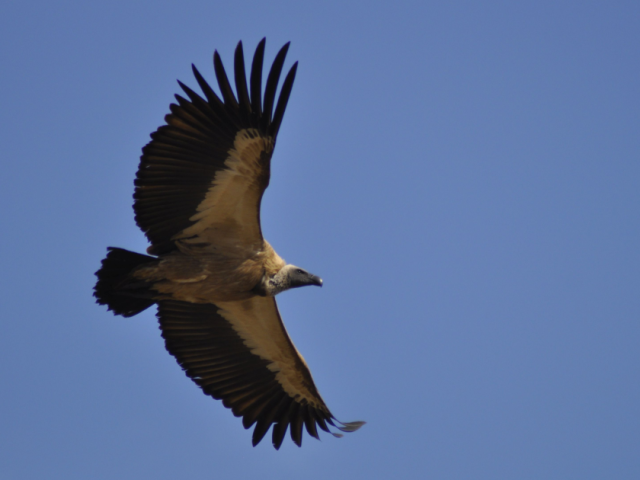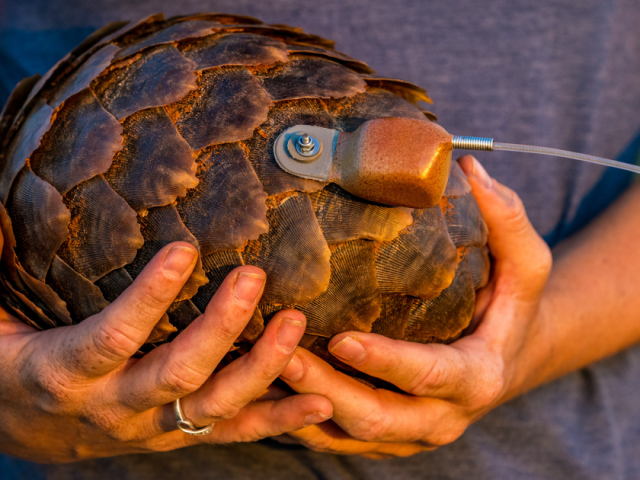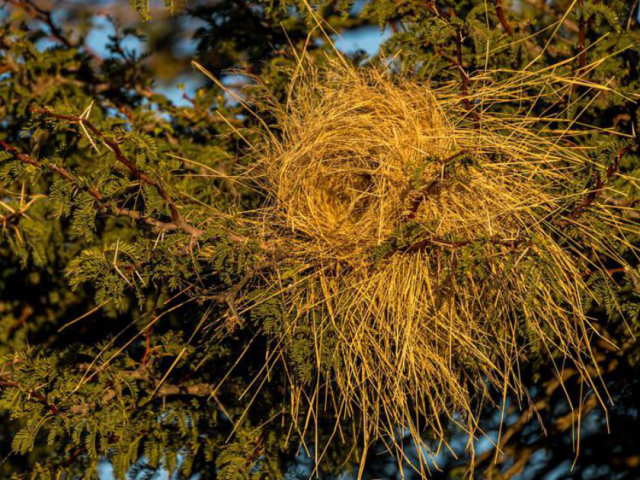There’s little as rare as a rere’s egg on Madagascar. So when Chris Ransom, the Director of Field Programmes at the Durrell Wildlife Conservation Trust, announces that they’ve had a few eggs hatch it’s huge news. “We got quite excited,” he says. “We haven’t managed to breed them at our Ampijoroa breeding facility since 2017, but this year we managed. That was a real achievement”.
The Great Red Island in the Indian Ocean off Mozambique is home to more than 200 000 species, and 90% of them are found nowhere else. Many of these face extinction, and the 100 or so species of lemur on the island are all endangered to some extent. That includes the cute Goodman’s Mouse Lemur, more popularly known as Mort in the movie Madagascar.
The Madagascar big-headed turtle, known locally as the ‘rere’, is just one of the 11 species that Durrell has nudged away from extinction on the island. But it’s slow work, and the wins are hard-fought. As Alex Shears, Durrell’s director of communications and fundraising, notes, “it takes decades to save species”. Durrell has been working in Madagascar for nearly 40 years, and “we are there for the long term, because the species need us,”.

It’s not just about this or that species, however, and the broader philosophy and environment, fostered at Durrell headquarters Jersey Zoo, are important. Shears says that “one of the things we recognise is that the ‘nature connection’ is really important. That sounds a bit tree-huggy, I’ll admit. But, actually, it’s not that. There’s concrete evidence that when people feel better connected to nature, they’re more likely to show pro-environmental behaviours. It might be they get on their bike to go to work instead of driving in their car. It might be that they become a member of a conservation organisation. Having that connection, which is quite an emotive thing, means that you feel you are part of the natural world rather than apart from it. You’re actually seeing yourself within that natural world that we’re talking about.”
As much as the ‘nature connection’ is important to people, the ‘people connection’ is vital to conservation.
“Our approach is to use species conservation to restore ecosystems and we base all our work around working with people who also depend on those ecosystems,” says Ransom. “People are at the heart of everything we do because they have to be. The conservation issues that we face are driven by people and by the challenges that they face, particularly lack of firewood, a lack of food, poverty, everything. They need to utilise natural resources in order to survive and live.”
More than 80% of Madagascar’s 30 million people live in poverty, and the country is ranked 177 out of 193 countries on the Human Development Index. In 2022 the country went into the first climate change induced famine.

Ignoring all this would be foolhardy, but the environmental and conservation challenges are as acute as the human ones. Most of Madagascar’s surface is denuded, and Shears notes that “you can drive for 10 hours and not see a tree. You might as well be in the Sahara.” The island has lost 80% of its natural areas and 200 000 hectares are lost every year to deforestation from illegal logging, charcoal production and slash-and-burn agriculture to make way for rice fields, the most important staple food in northern and central Madagascar. Researchers warn that if deforestation carries on at the current rate all of Madagascar’s forests could be lost within 25 years, including most of its 2 900 endemic tree species and animals such as lemurs, fossa and tenrec.
Their salvation, says Ransom, rests on securing a future for people. “Madagascar’s conservation sector and national parks are set up allow communities to be at the heart of everything. Unlike some places where you hear the term fortress conservation, where national parks were very much set up to exclude people, Madagascar’s completely the opposite.”
“We do a lot of activities with communities, not just around involving them in the governance, but how we can improve their livelihoods. A huge part of our programme could be seen as a development programme, and that takes about 30% of our budget: helping with agricultural practices, financial resilience through village savings and loans associations, working with women on basket weaving, setting up value chains for people to sell products, whether it’s agricultural products or baskets to ensure that they get revenues from that, plus the work with communities around reforestation. We want the correct species of trees in the ground for erosion control for biodiversity conservation, but part of that is also what benefits they can get from the trees, whether it’s firewood, fruit, or other products that they can sell at market.”
However, Ransom stresses that “something that we as an organisation have to be very mindful of is that that our mission is saving species”.

Ampijoroa Chelonia Conservation Centre Manager
His team of about 140 is therefore focused on protecting 11 species in particular: the Alaotran gentle lemur, Narrow Striped Mongoose (‘bokiboky’), Durrell’s vontsira, Malagasy giant jumping rat, Madagascar flat-tailed tortoise, Madagascar pochard duck, Madagascar pond heron, Madagascar big-headed turtle, Madagascar teal, Meller’s duck and the Ploughshare tortoise.
Over the years, says Ransom, “we have helped save the Ploughshare tortoise from extinction and we have saved its habitat,” says Ransom. “We’ve released pochards back into the wild. We’ve released rere and allowed the breeding of 20 000 eggs. Populations in three key sites have doubled in 15 years.”
Saving the ploughshare tortoise required the most extreme measures, including hi-tech surveillance measures and armed guards. This was prompted by a raid in the mid-90s in which 75 tortoises were stolen from one of the protective facilities. Fetching tens of thousands of dollars on the international black market, they are a prime target, and only about 50 have survived in the wild as a result. says Ransom. “During the peak of the poaching crisis, there was a massive effort to capture as many as we could from the wild to protect them. Our hope is to eventually release them back into their natural habitats, but we need assurance that poaching levels won’t spike again. If we were to release the 800 animals back into the wild now, it would likely lead to a significant increase in poaching.”

To ensure their safety, a seven-hectare enclosure is being built. The fence line is already in place, but £60 000 to £70 000 is needed for a comprehensive security system including thermal imaging cameras and Wi-Fi connectivity. “This would enable us to have an operations room with continuous monitoring of the entire fence line, which is crucial given the multiple potential entry points for poachers. Once we secure the funds, we aim to relocate a number of these tortoises into the enclosure. Our captive facilities are nearing capacity. We are bursting at the seams, which is a positive indicator of a strong captive population,” says Ransom.
Bringing the rarest duck in the world, the Madagascar pochard duck, back from extinction has been a quieter but equally heroic affair. It was declared extinct in the wild in 2004, but in 2006 partners of the Peregrine Fund found a small population on a small, isolated lake in the highlands. The Peregrine Fund ensured protection of lake and the birds, but breeding success was poor and 24 chicks were taken into captivity to breed up as an “insurance population”. In 2018, 21 ducks were released back into Lake Sofia, with a view to reintroducing them back into the wild. Now, says Ransom, “we’re regularly counting between 55 and 70 on the lake. However, what we have recently found is that these birds are dispersing. We’ve spotted six birds on Lake Alaotra, which is their ancestral home, and the last site where they were seen in the wild before we thought they’d gone extinct. That’s over 300km from Lake Sofia.”

Rescuing the rere, a critically endangered species that has remained largely unchanged since the age of the dinosaurs, started in 1998. It took until 2015 before it was possible to release a batch back into the wild. There have been two releases since then and there are now about 10 000 in the wild, but their marsh habitat is itself under threat and they are under constant risk of being hunted for the pot. In the meanwhile, the breeding programme continues, and the hatch at Ampijoroa has been cause for celebration.
The fate of the bandro (Alaotran gentle lemur), the fourth of Durrell’s high-priority animals, is shrouded, partly because it’s not known exactly how many there are, and partly because the marshes which are their home are being cleared for rice plantations. “It’s really hard to survey a lemur that lives in the reeds, so we’ve been testing out a new methodology for surveying them using drones and thermal imagery,” says Ransom. He guesses that the numbers are about 500, but “we hope to have actual bandro numbers for the first time ever, by the end of this year.”
“Once we’ve done this survey,” he says, “we’ll also have locations of where all the groups of bandros are. Our suspicion is that there’s a there’s a lack of connectivity between different areas of marsh, so part of our conservation interventions might be to replant corridors of marsh, to connect the different groups that are more isolated from each other as well.”
The bandros, which are culturally sacred to the Sihanaka tribe, also hold a special place for conservationists. Yes, because they are impossibly cute, but also because they formed part of Gerald Durrell’s final rescue mission to Madagascar, which he documented in his last book, The Aye Aye and I.
In his book Gerald Durrell, who founded the Durrell Wildlife Conservation Trust, as well as the pioneering Jersey Zoo, describes the island as “filled with magic”. To ensure the magic lasts, says Ransom, “we’re trying to restore habitats and ecosystems the best we can. It’s a huge task because we’re looking at vast areas that have just been entirely removed of trees. Lake Alaotra is a vast watershed, and you barely see a tree anywhere. We’re reforesting or replanting about 500 hectares of land a year with trees, which is a massive, massive amount, but we’re scratching the surface.
“Most of the reforestation of the watersheds will be native species, but then around communities, we’ll have acacia, maybe a little bit of eucalyptus, which grows very fast that then the communities can use it for fuel wood rather than cut down the native species. We’ve got hundreds of thousands of seedlings being planted every year. We’ve got probably 30 odd nurseries across our sites where we’re working with communities to grow the seedlings to enable us to do this replanting.
“It’s not just trees we’re replanting. In Alaotra , we’re replanting marshes. In Bali Bay, where the ploughshare are, we do a lot of mangrove restoration. Then we’re doing a lot of hyacinth removal from the lakes, to restore the habitat by removing invasive species.”

ploughshare tortoise
After a recent visit to Madagascar, Duncan MacFadyen, the head of Oppenheimer Generations Research and Conservation which funds the Trust, said “the brilliant work conducted by Durrell Wildlife Conservation Trust, now and over the past several decades, is monumental, having literally saved dozens of species from extinction. It is heart-warming and encouraging to see the passion, impact and influence this organisation has had across Madagascar. This is the kind of impact we “OGRC” look for when partnering with a conservation organisation, focusing on rewilding habitats, saving species and improving the livelihoods of the people on the ground.
Author
- Tracking the Shangani Wanderer - June 18, 2025
- Rescue, rehabilitate, release: tracking the comeback of South Africa’s pangolins - June 18, 2025
- Fewer weavers, fewer homes: why nest builders matter in the Kalahari - June 17, 2025
Additional News
Pangolins are elusive and heavily trafficked. At Tswalu, researchers are working to uncover their secrets and aid conservation.
Declining Sparrow-Weavers may threaten other birds that rely on their old nests for shelter.





